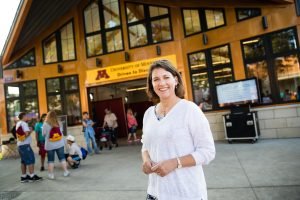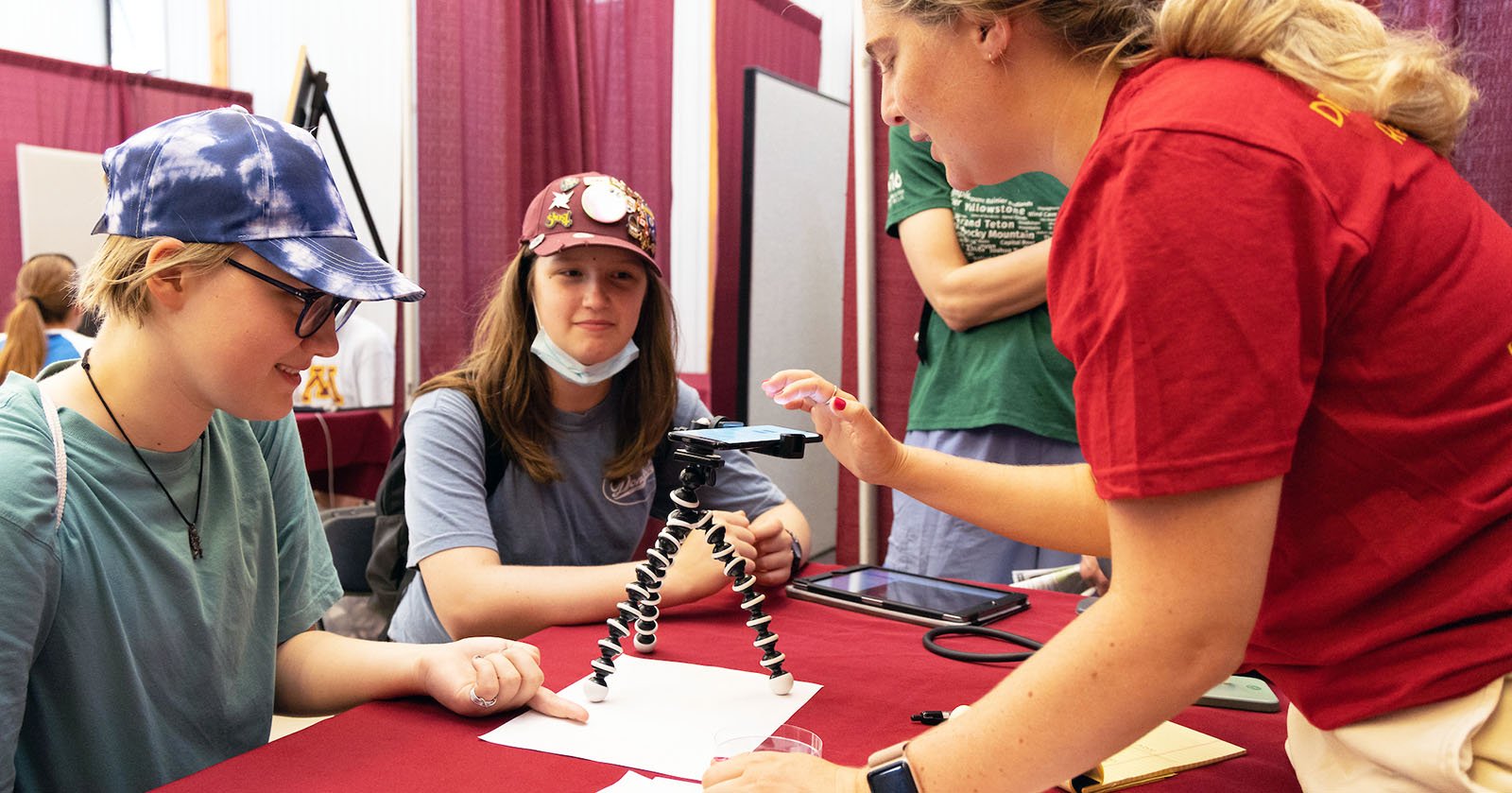In 2014, when Professor Ellen Demerath from the University of Minnesota School of Public Health (SPH) and Professor Logan Spector from the Medical School were planning a large-scale research project called the Gopher Kids Study, Spector proposed a novel strategy. Both had recently visited the Minnesota State Fair, and been impressed by the throngs of people. What if, Spector thought, they simply set up a booth at the fair and invited attendees to participate in their research?
That first day, Demerath and Spector weren’t sure what to expect. They had gotten some press through a couple of interviews, but had no idea what kind of response they’d get. “Just before the booth opened at 9:00 a.m., we looked out and saw all of these people lined up,” she recalled. “Once we opened, people were just flowing in; it was unbelievable.”
“You take a top-tier, Big 10 research university, add in the biggest state fair per capita in the United States, mix them together for 12 days, and what you get is enormous research opportunities.” —Professor Ellen Demerath
That was the genesis of Driven to Discover (D2D), which over the last decade has become a mainstay at the fair. Along with a stop at Sweet Martha’s and a trip down the Giant Slide, thousands of Minnesotans consider a visit to the D2D building (located at 1367 Cosgrove Street) an essential part of their fair experience. Since 2014, more than 435,000 people have visited the D2D building, and nearly 150,000 individuals have participated in over 375 research studies. It’s all part of D2D’s mission to connect the community with the work of the University and promote greater participation in research. It’s what Demerath refers to as D2D’s “magic recipe.”
“You take a top-tier, Big 10 research university, add in the biggest state fair per capita in the United States, mix them together for 12 days, and what you get is enormous research opportunities and a chance to include Minnesotans in the important work going on at the U.”
Since 2014, D2D has hosted a wide range of research projects spanning various disciplines, including public health, cognitive science, law, transportation, marketing, child development, nutrition, environmental health, and much more. For instance, researchers have asked participants to test the dangers of texting while seated in a driving simulator, explored new designs for better fitting, more comfortable masks and gloves, invited fairgoers to learn about risk factors, prevention and treatment of colon cancer by walking thru a giant inflatable SuperColon, and asked kids and teens to perform fitness and agility testing each year, among many others. (Access the full list of over 50 studies that will be conducted at the 2024 State Fair.

“What we’re focused on at D2D is research that is non-invasive, low risk, and appropriate to the state fair environment,” Demerath said. “Beyond that, anything goes.” One memorable recent study that met these criteria involved collecting…toenails. U of M researchers at D2D were seeking to measure individuals’ levels of certain nutrients and exposure to some environmental toxins, and it turns out the toenails are an excellent way to measure the amount of both micronutrients and heavy metals in the body.
Previous funding from the Research and Innovation Office, along with matching support from SPH and other colleges allowed for the initial start up ten years ago, followed by a 2016 University-wide capital campaign for a permanent D2D building at the fairgrounds. Now, D2D is funded exclusively by individual researchers who pay a ‘shift fee’ to utilize the D2D building space and service.
In the end, Demerath says, D2D is only as successful as the people who are willing to stop by the building and lend their time and support. “D2D would not be possible without the openness and curiosity of the people who participate in our research studies. We’re so grateful to the thousands of people who come to the building and help make all of this happen,” she said.
Visit the School of Public Health and other U of M researchers to take part in studies at the D2D building between August 22-September 2. Free with admission to the Minnesota State Fair.

